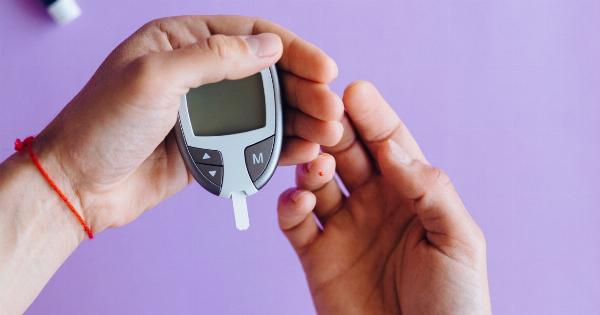Exercise is important for everyone, including individuals with diabetes. Regular physical activity can help manage blood sugar levels, improve cardiovascular health, and boost overall well-being.
However, certain exercises may not be suitable for individuals with diabetes due to the potential risks involved. It is crucial for diabetes patients to consult with their healthcare team before starting any new exercise program and to avoid activities that could negatively impact their condition.
In this article, we will discuss some exercises that diabetes patients should stay away from.
1. High-Impact Cardiovascular Exercises
High-impact cardiovascular exercises like running, jumping jacks, or vigorous aerobic activities may not be ideal for individuals with diabetes. These activities put excessive pressure on the feet and joints, increasing the risk of injuries.
People with diabetes may have reduced sensation in their feet due to neuropathy or poor circulation, making them more vulnerable to foot-related problems.
2. Heavy Weightlifting
While strength training can be beneficial for individuals with diabetes by improving insulin sensitivity and promoting muscle growth, heavy weightlifting can pose risks.
Lifting extremely heavy weights can cause a sudden and significant increase in blood pressure, potentially leading to complications for those with cardiovascular issues. Diabetes patients are advised to prioritize lighter weights and higher repetitions rather than attempting maximum lifts.
3. Activities with Extreme Temperature Changes
Exposure to extreme temperatures, both hot and cold, can affect blood circulation and make it challenging for individuals with diabetes to regulate their body temperature.
Saunas, steam rooms, or activities like hot yoga, where the body is subjected to extreme heat, should be avoided. Similarly, exercising outdoors in extremely cold conditions can lead to circulation problems and increase the risk of frostbite, especially if the individual has preexisting peripheral neuropathy or vascular issues.
4. Contact Sports
Contact sports such as football, rugby, and martial arts carry a high risk of injury, including cuts, bruises, fractures, and concussions.
Due to the potential for slow wound healing and compromised immune function in diabetes patients, participating in contact sports can increase the likelihood of infections and delays in healing. It is advisable for diabetes patients to engage in low-contact or non-contact sports and activities instead.
5. Exercises without Proper Footwear
Ill-fitting footwear combined with exercise can lead to foot problems in individuals with diabetes. Friction, pressure points, and blisters can go unnoticed due to reduced sensation.
Diabetes patients should always wear properly fitted and supportive shoes while exercising to reduce the risk of foot ulcers or other foot-related complications.
6. Intense High-Intensity Interval Training (HIIT)
High-Intensity Interval Training (HIIT) involves periods of intense exercise followed by short recovery periods.
While HIIT can be an effective way to improve cardiorespiratory fitness and burn calories, it may not be suitable for all individuals with diabetes. Intense bursts of exercise could lead to spikes in blood sugar levels, especially in individuals who have difficulty regulating their glucose levels. Consultation with a healthcare professional is recommended before attempting HIIT workouts.
7. Unsupported Balance Exercises
Exercises that require excellent balance, such as certain yoga poses or using stability balls, can increase the risk of falls or injuries for individuals with diabetes.
Peripheral neuropathy, a common complication of diabetes, can cause a loss of sensation in the feet and impair balance. It is crucial to select balance exercises with caution and ensure they can be performed safely, with proper support and supervision.
8. Excessively Strenuous Endurance Exercises
While moderate endurance exercises like brisk walking, swimming, or cycling offer numerous benefits, excessively strenuous endurance exercises may put excessive strain on the heart and other organs.
Diabetes patients with underlying cardiovascular conditions or uncontrolled blood pressure should avoid pushing to extreme limits during endurance activities. It is important to find a balance that challenges the body without exceeding its capabilities.
9. Unsupervised Resistance Band Workouts
Resistance band workouts can provide an effective strength training option for individuals with diabetes. However, unsupervised or improperly performed resistance band exercises can lead to injuries.
The incorrect use of resistance bands, particularly when trying to increase intensity or using bands that are too strong, can cause strain on muscles, joints, and tendons. It is advisable to learn proper techniques from a qualified fitness professional or physical therapist.
10. Exercises That Cause Pain or Discomfort
Lastly, individuals with diabetes should avoid exercises that cause pain, discomfort, or unusual symptoms. Prolonged pain or discomfort during or after exercise could indicate an underlying issue that needs attention.
Painful exercise may lead to avoidance of physical activity altogether, hampering the overall health and well-being of the individual.
Conclusion
While exercise is vital for diabetes management and overall health, it is crucial for individuals with diabetes to be cautious and mindful of which exercises to avoid.
High-impact activities, heavy weightlifting, extreme temperature changes, contact sports, unsupported balance exercises, excessively intense workouts, unsupervised resistance band workouts, and exercises that cause pain should all be approached with caution. Consultation with healthcare professionals, such as doctors, diabetes educators, or exercise physiologists, is strongly recommended to determine safe and suitable workout routines.
Remember, exercise should always be enjoyable, safe, and tailored to individual abilities and limitations.































